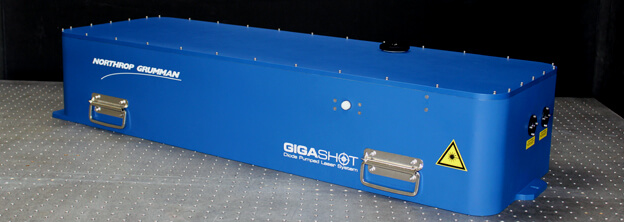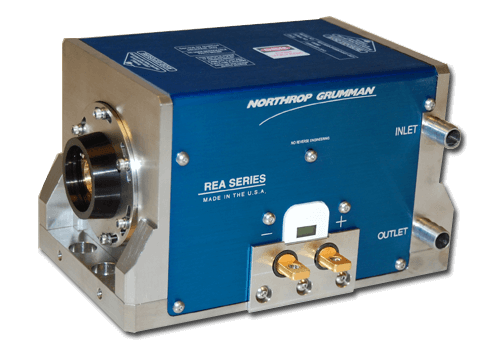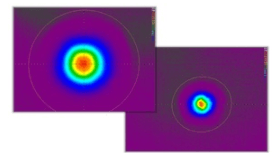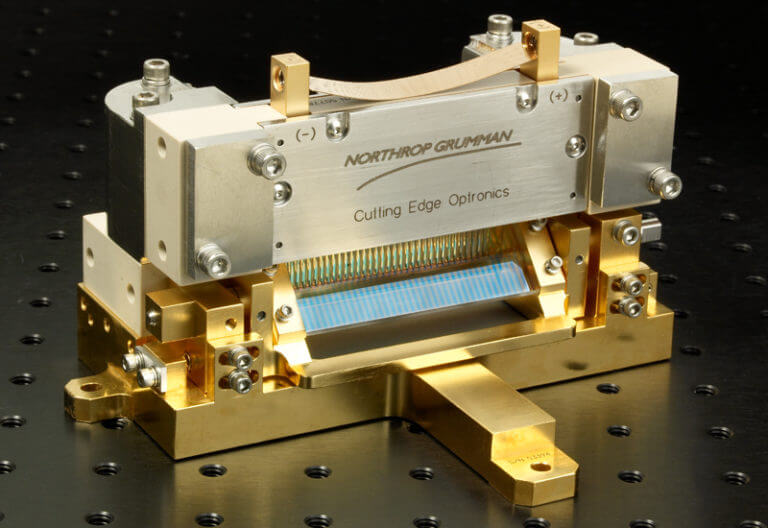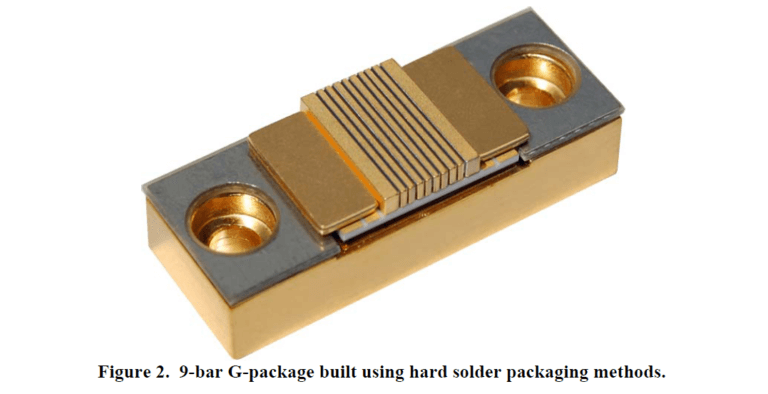Newly published data for the next generation high energy, short pulse, Nd:YAG laser system is now available. The GIGASHOT DPSS high energy laser delivers 320 mJ of pulse energy in pulses that are less than 9 ns at 1064 nm. Integrated harmonic generation and wavelength separation options for 532 nm and 355 nm output are also available. This article contains specification data, beam images, beam quality data, and stability runs at 1064 nm, 532 nm and 355 nm.
2.75 Joule Laser Amplifier Data
Newly published data for one of CEO’s highest energy QCW laser amplifiers is now available for viewing. This article details typical small signal gain, stored energy, thermal lens strength and gain uniformity data.
200W @ 532nm Laser Data
200W @ 532nm Laser Data
Laser Diode Construction: Golden Bullet vs. Silver Bullet
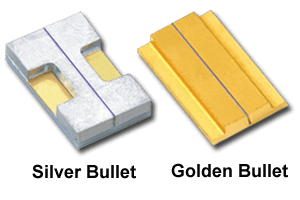 Cutting Edge Optronics (CEO) manufactures laser diode arrays based on two main types of technology, hard solder (CEO Golden Bullets) and soft solder (CEO Silver Bullets). Golden Bullets are state-of-the-art and are built using gold-tin solder and heat sinks that have the same CTE (coefficient of thermal expansion) as the laser diode bar. As a result, arrays built from Golden Bullets are extremely resistant to solder creep and other failure modes that result from thermal expansion and contraction in the array.
Cutting Edge Optronics (CEO) manufactures laser diode arrays based on two main types of technology, hard solder (CEO Golden Bullets) and soft solder (CEO Silver Bullets). Golden Bullets are state-of-the-art and are built using gold-tin solder and heat sinks that have the same CTE (coefficient of thermal expansion) as the laser diode bar. As a result, arrays built from Golden Bullets are extremely resistant to solder creep and other failure modes that result from thermal expansion and contraction in the array.
Laser Pulse Train Amplification with PowerPULSE Amplifiers
High peak power optical pulses are very desirable in industrial, scientific, and military applications.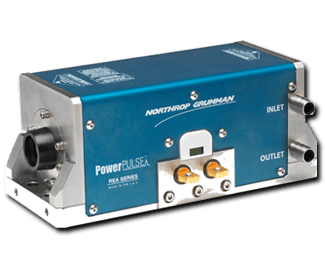 However, maximum peak powers are limited by the damage threshold of the optical materials used and the amount of amplification available. While pulse-pumped amplifiers can achieve high gains, they are typically limited in total average power. Practical pulse trains contain pulses that are 10s of picoseconds in width, repeat every microsecond or faster, and have pulse bursts lasting 1-5ms or longer. Under these conditions a higher average power is needed to sustain the amplification of the pulse train.
However, maximum peak powers are limited by the damage threshold of the optical materials used and the amount of amplification available. While pulse-pumped amplifiers can achieve high gains, they are typically limited in total average power. Practical pulse trains contain pulses that are 10s of picoseconds in width, repeat every microsecond or faster, and have pulse bursts lasting 1-5ms or longer. Under these conditions a higher average power is needed to sustain the amplification of the pulse train.
Northrop Grumman Cutting Edge Optronics has developed a line of laser amplifiers that have the high gain of the pulse pumped amplifiers, and can maintain the amplifier gain for 1-5ms. This allows the amplification of long pulse trains using fewer devices, less gain material, and lower overall cost.
© 2011 Northrop Grumman Systems Corporation – All Rights Reserved
kW-Class, Wavelength-Stabilized Laser Diode Arrays
Numerous laser media exist with absorption peaks that are too narrow to make use of standard laser diode pump arrays with emission widths of 2-3 nm. For these absorption peaks (such as Nd:YAG at 885nm, Nd:YVO4 at 880nm, and Yb:YAG at 969nm), laser diode pump arrays with narrower emission spectra are highly beneficial.
Cutting Edge Optronics has developed a process for building high-power laser diode arrays with narrow emission spectra by adding Volume Bragg Gratings during the packaging process. These arrays emit with a spectral width of approximately 0.5nm (FWHM), and are available with output powers ranging from tens of watts to several kilowatts. Experimental data is presented in this technical note for arrays operating at up to 100W per bar (CW).
© 2011 Northrop Grumman Systems Corporation – All Rights Reserved
QCW Diode Array Reliability at 80x and 8xx nm
Cutting Edge Optronics (CEO) has recently developed high-power laser diode arrays specifically for long-life operation in quasi-CW applications. These arrays feature a new epitaxial wafer design that utilizes a large optical cavity and are packaged using AuSn solder and CTE-matched heat sinks.
This work focuses on life test matrix of multiple epitaxial structures, multiple wavelengths, and multiple drive currents. Particular emphasis is given to the 80x and 88x wavelength bands running at 100-300 Watts per bar. Reliable operating points are identified for various applications including range finding (product lifetimes less than 1 billion shots) and industrial machining (product lifetimes greater than 20 billion shots). In addition to life test data, a summary of performance data for each epitaxial structure and each bar design is also presented.


